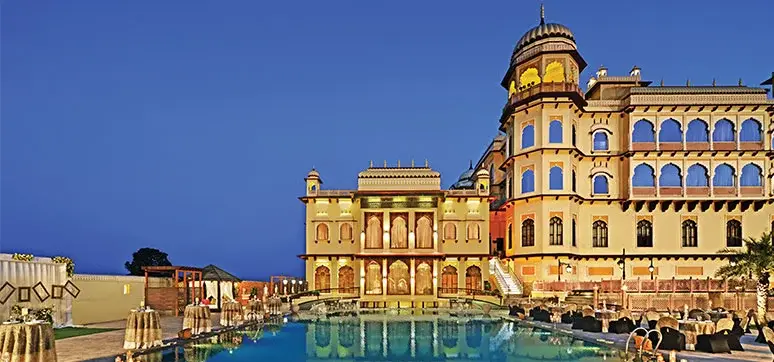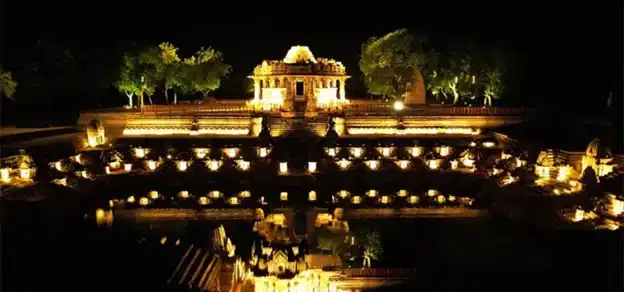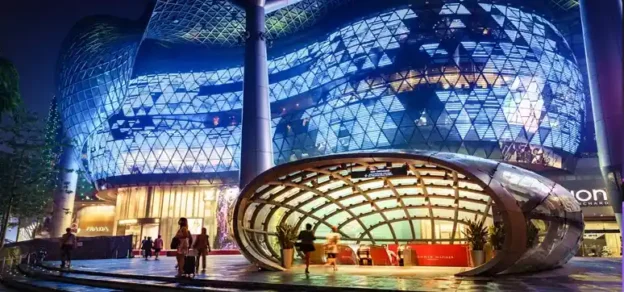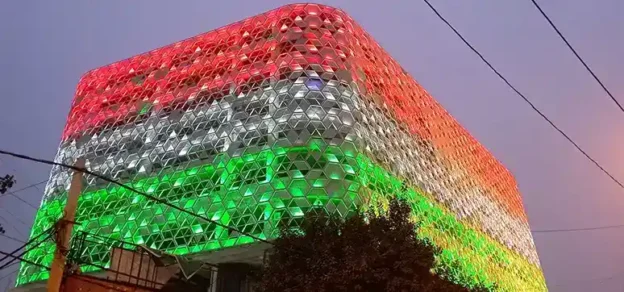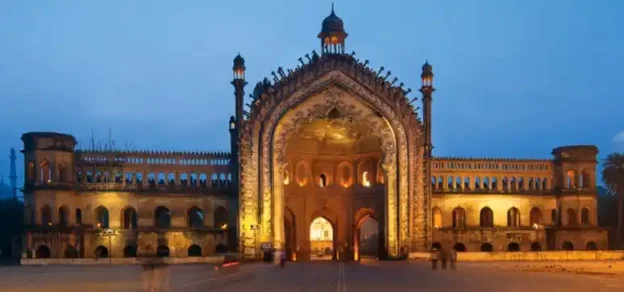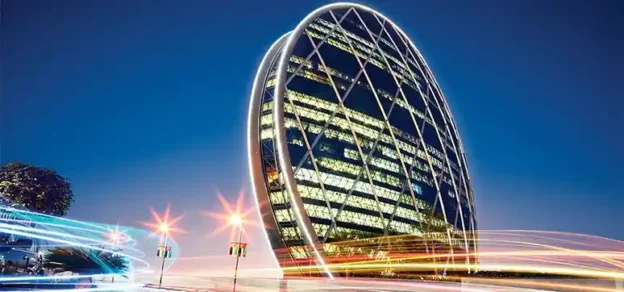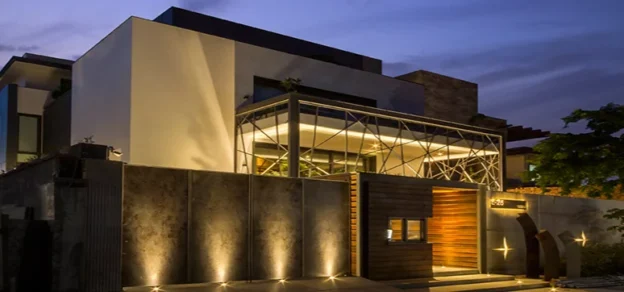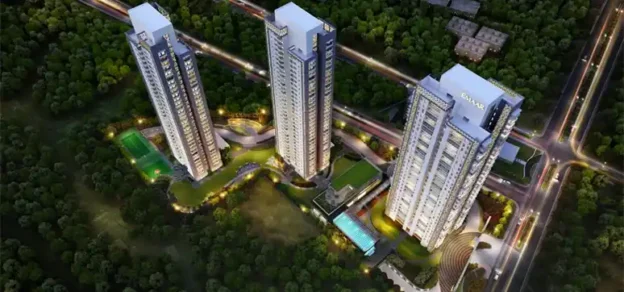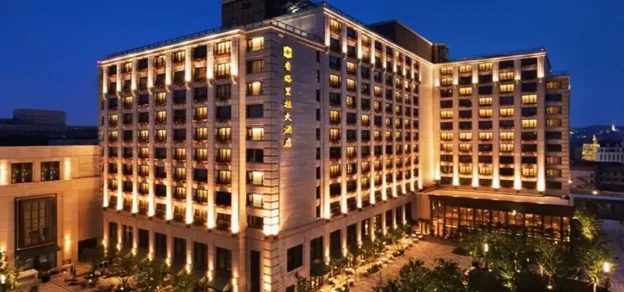A couple of weeks ago, from my visit to the world’s most romantic city – Paris, witnessing the stunning show of light and colour, I was awestruck by the Saint Chapelle’s beauty, its radiant light, striking colours and juxtaposition of natural light on the stained glass windows. It is one of the finest examples of an architectural marvel clothed in daylight bringing a sense of peace and serenity.
Light provides both intellectual as well as physical form to our world. As an architect, I have been unable to ignore these rather obvious conditions. Physical movement combined with a relationship to light promotes our well-being – both physical and intellectual.
Natural light not only plays on the comfort, health and mood of man, in architecture, but this is also an integral part of the design of a building, bringing an added value.
However, in a 24-hour day, it is difficult to meet all the lighting needs of a building, which is why artificial light is used. It becomes essential that particular tasks are done indoors, and some evening activities outdoors. Hence, lighting solutions are supported for natural light during the day and has utilitarian and specific functions at night.
One could say that the design of a good lighting designer is based first and foremost on the proper use of natural light followed by right implementation and usage of artificial light whereby illumination of a building façade determines a very significant role in marking an identity of the building and the local environment.
Frequently, the night identity is different and independent from the day identity. The night identity gives a new meaning and images to the buildings and lifts the profile of the vicinity. Facade lighting shapes the image of a town scape, attracts attention and lures in large numbers of tourists. This boosts revenues and enhances prestige.
It also gives investors an economic incentive to gentrify real estate and upgrade property usage, thus making it economically more attractive. Facade lighting creates added cultural value.
Professional Facade lighting and design today has potentially become a landmark and a point of interest, a key component for the external appearance of any important civic building, hotels, restaurants, railway stations, old heritage monuments, stadiums, etc., making a statement by itself that speaks a lot about the city to its visitors and citizens, reflecting the city’s values and instilling a sense of pride within the citizens. We can say that Facade Lighting can actually change the way we look at the buildings.

In principle, we can recognize in the night urban scene, several kinds of lighting applications and their sources right from public illumination for public areas, object illumination, noticing the architecture of the building, advertisement, illumination of window exhibition in the historic center, and temporary sources, etc.
In a world highly concerned about carbon emissions, global warming, sustainable design and light pollution, the planned use of artificial light on building envelopes has become of paramount importance and strategy to improve energy efficiency by minimizing lighting, introducing innovative, advanced facade lighting systems that can considerably reduce building’s electricity consumption and have significantly improved the quality of light indoors and in the outdoor environment.
With the increase in complexity of client needs and new roles and expectations resulting from technological developments, being lighting experts and designers, it becomes a role more important for us to consider technological as well as aesthetic aspects and critically integrate this sensitive interrelationship into a lighting concept that can transform an anonymous building to an appreciated landmark.

Operators, inhabitants and the town itself reap equal benefit from this in the long term. This is achieved in two ways – either by emphasising architecture in a traditional manner or offering freedom of expression and style using contemporary techniques, that provides ease and flexibility to control our environment, create different scenes to suit the requirement of space.
Traditional architectural lighting solutions place emphasis on the architecture, materials and the lighting effect sought after by the architect and building owner. Architecture is illuminated without altering the character of a building. Individual facade elements are accentuated and the natural structures of the facade are emphasized. Bright, vertical surfaces produce a greater sense of security and assist with orientation.
On the other hand, contemporary lighting transforms architecture by using light to shape it rather than simply accentuating the facade elements. Light patterns, structures and colours inject fresh character into plain, unpretentious architecture at night. Neutral objectivity is replaced by an emotionally perceived experience.
Many architects want to deliberately give their structures a completely fresh night-time look. This sort of lighting replaces classic accenting and plays with bold colours. Creative lighting patterns and structures breathe new personality into neutral buildings.
They arouse attention and shape a town scape. Creative lighting elements invite the onlooker to contemplate and linger and provide an interestingly varied atmosphere. When integrated well with traditional lighting, contemporary lighting techniques not only help to create a WOW factor, they also add drama as well as interest to a bland space.

Going ahead, as we see a paradigm shift in technology from it being just functional till a couple of years ago and now embedded in our daily lives, integrated into our lifestyles and our DNAs, lighting too has seen transformations from an incandescent lamp to CFL to LEDs and now smart lighting systems.
Today we can create a world where, we can connect every light point to the internet, can take control over our environment, customize our space as per our choice and connect to that space, providing information to enhance our experience and effectiveness. Not to forget here, seamless integration of both the above-mentioned styles play a major role when we move from conventional LED systems to smart lighting systems, hence striking a balance between both.
LED technologies and lighting control systems are making lighting ever more versatile. Media content can now be played back onto light fields. This imparts information to the onlooker that goes beyond the appearance of the architecture.
Communicative lighting concepts are deployed primarily in outdoor areas and are used as prestige projects for towns, brands and investors. It is done by creating images, videos, animations or extravagant colour patterns, transforming facades into dramas of light, staged in corporate colours, leaving a highly memorable brand identity that is recognizable even from afar.

Times Square in New York, Piccadilly Circus in London and the Ginza District in Tokyo are perfect examples of where the character of the area, as well as the townscape, is based on Facade lighting, however many of our cities are becoming over-illuminated by back-lit signs, media screens and street lighting. Many contemporary buildings are made of glass and become like giant light fittings when lit up. If we fill every square inch of the visual landscape with light, then it becomes a very uniform and very dull, flat and uninviting solution.’
Getting just the right amount of light is the challenge because too much light can lead to light pollution, a term that is being used now to describe some city landscapes. Beautifully-lit buildings light up the surroundings too therefore, the lighting solutions used need to be sustainable, save resources and prevent unnecessary light pollution.
Hence, it is necessary to investigate the effects of stray light in the design of the large illuminated area, particularly advertising with the amount and direction of the reflected light that can definitely determine limits for luminance in a specific proposal.
